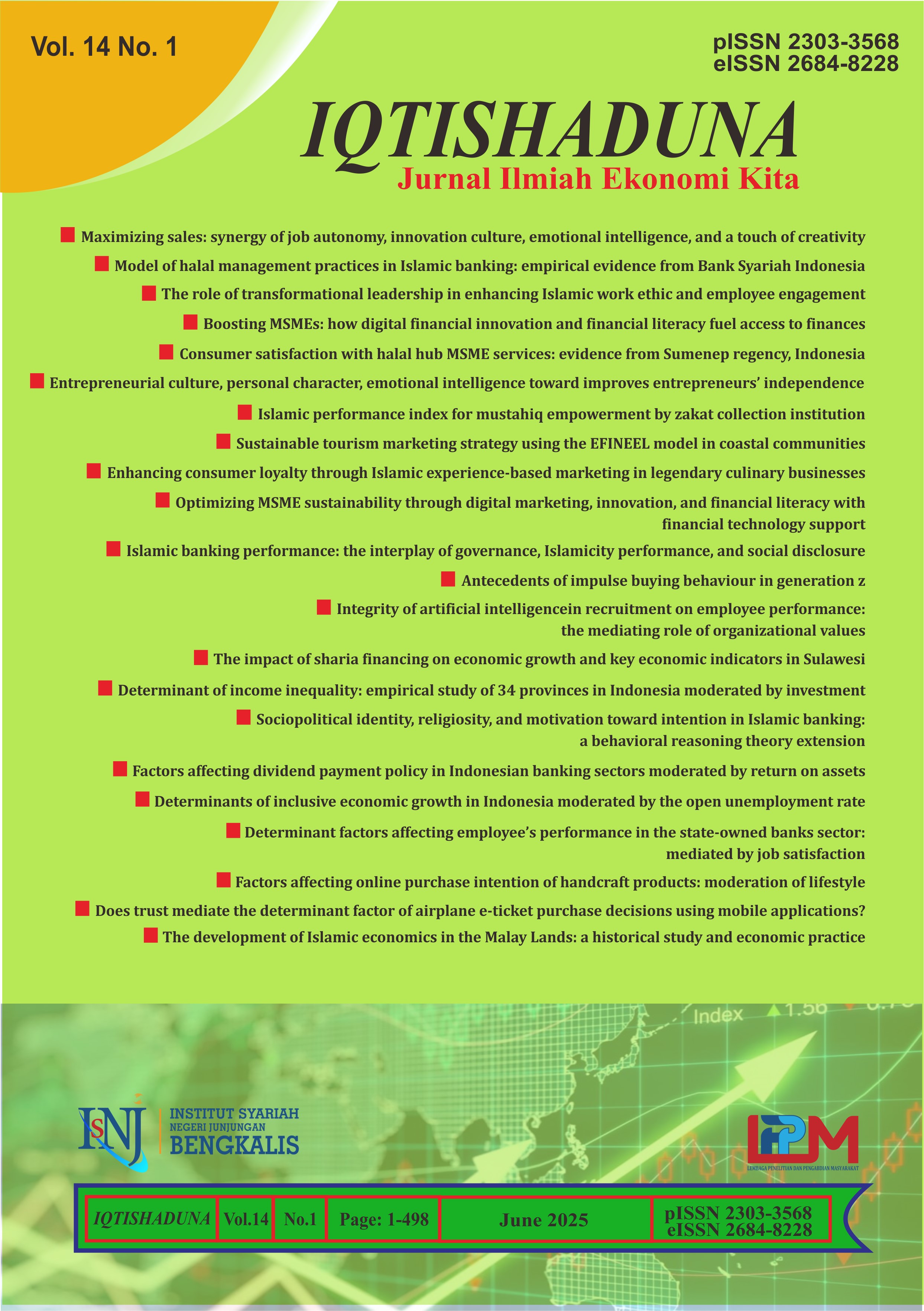Islamic performance index for mustahiq empowerment by zakat collection institution
Abstract
Purpose – This study aims to measure the performance of the Dompet Dhuafa North Sumatra Zakat collection institution in the transformation of mustahiq empowerment using the Islamic performance index (IPI) model. Method – This type of research is field research using a comparative descriptive method with a quantitative approach. Primary data was obtained through online and offline questionnaires. Meanwhile, secondary data was obtained from the annual report of the Dompet Dhuafa North Sumatra Zakat institution. The research population was 1896 Mustahiq in 2023. Using Slovin's formula, the sample size was 330 mustahiq. The analysis technique used in this study is the IPI model. Findings – The findings of this study demonstrate that the IPI model is applicable for assessing the performance of amil zakat institutions in enhancing the welfare of mustahiq. Nevertheless, in this study, the augmentation of material income is negligible, specifically, 25 mustahiq among 330 respondents. The increase in mustahiq religiosity significantly after acquiring zakat, infaq, and sadaqah, encompassing 316 mustahiq individuals. Implications – This research makes an important contribution to the literature on sharia-based zakat management by introducing the IPI model as a more holistic and integrated evaluation tool. On the practical side, the findings of this research provide valuable guidance for zakat institutions in designing more impactful and sustainable mustahiq empowerment programs.
Downloads
Copyright (c) 2025 IQTISHADUNA: Jurnal Ilmiah Ekonomi Kita

This work is licensed under a Creative Commons Attribution-NonCommercial-ShareAlike 4.0 International License.
 Abstract Views: 410 |
Abstract Views: 410 |  PDF Downloads: 139
PDF Downloads: 139










































